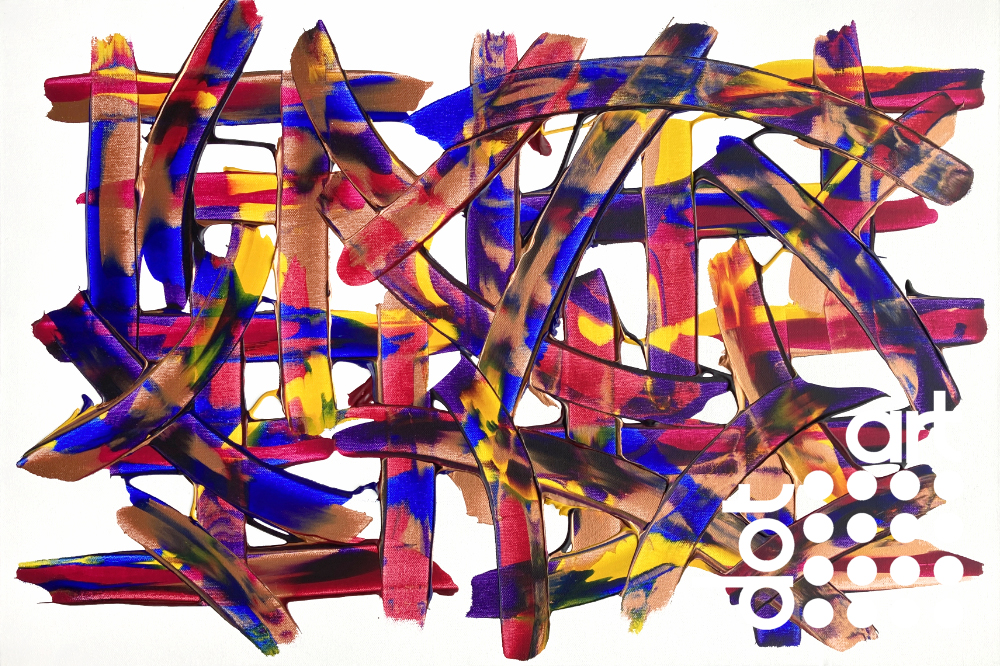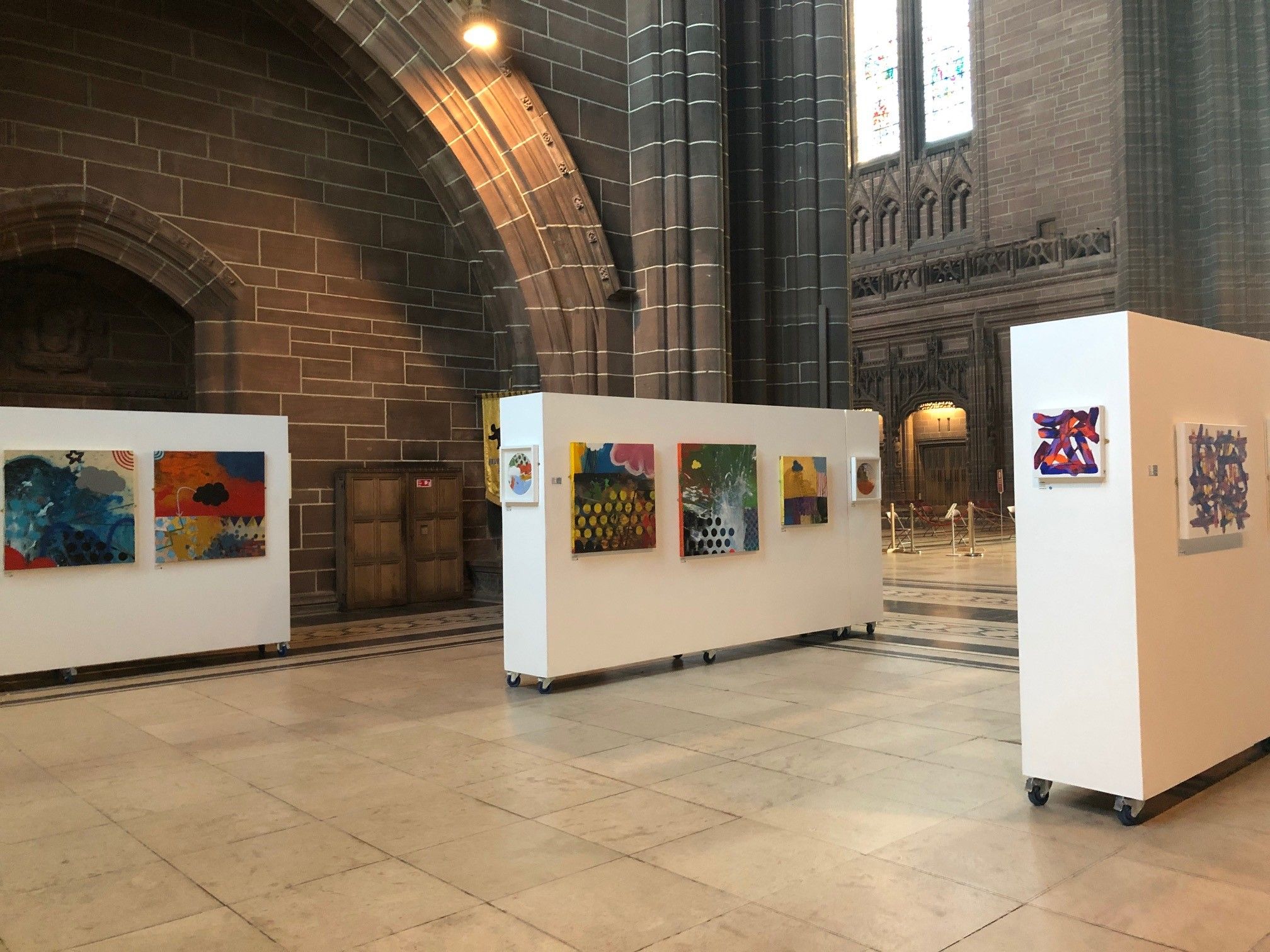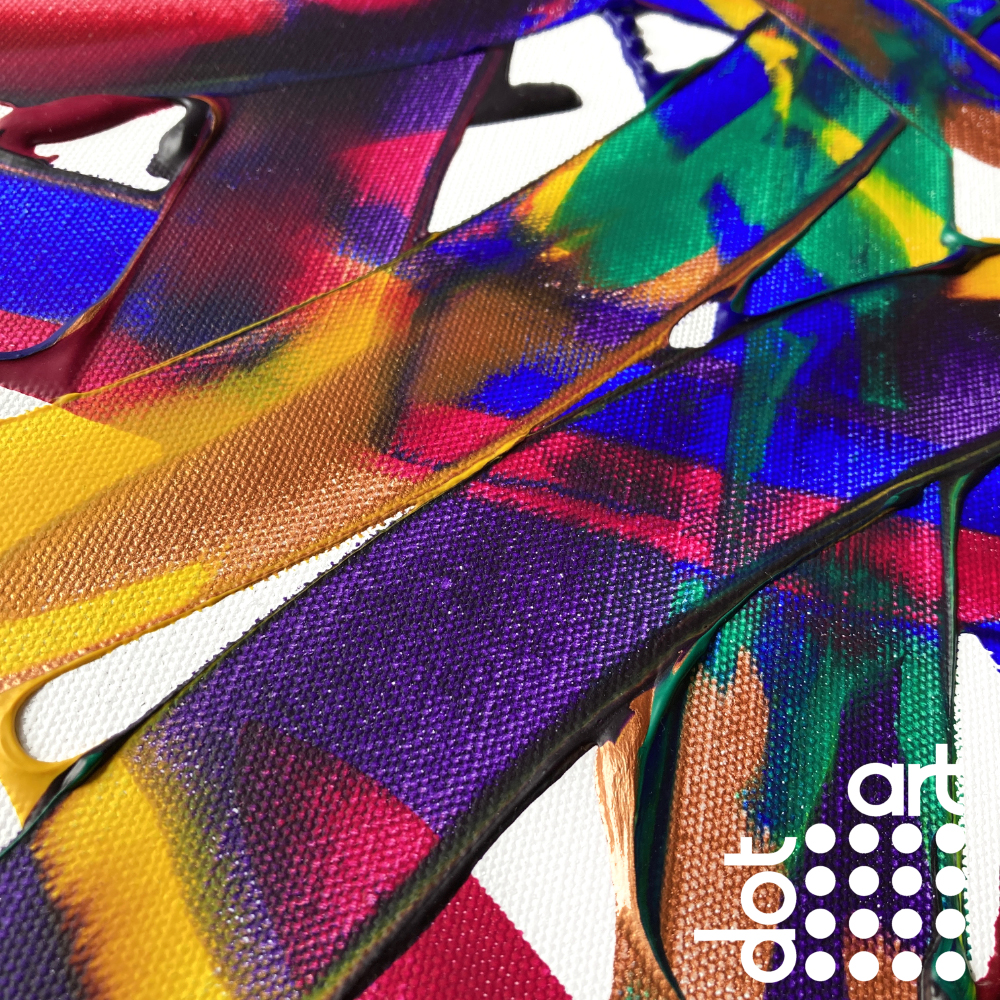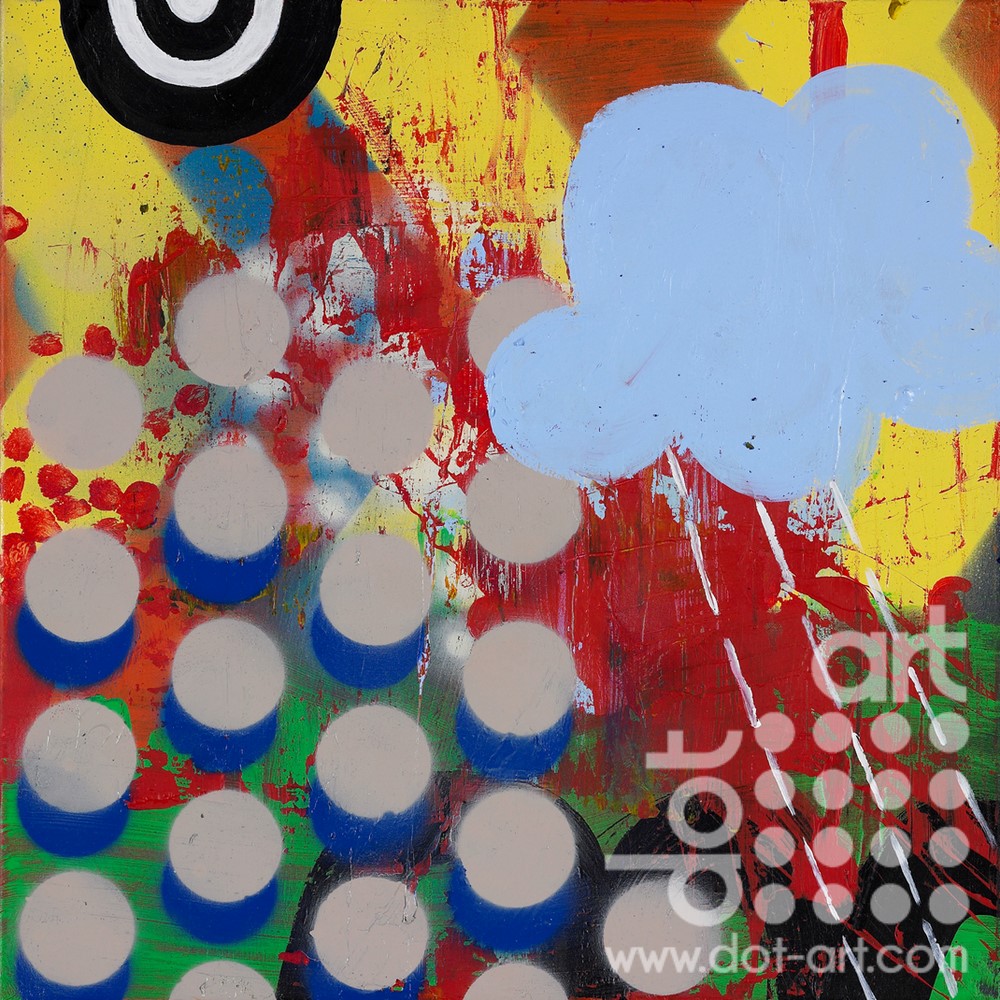This September dot-art launched its first exhibition with The Anglican Cathederal Expression Through Colour featuring works from long-standing dot-art members, Nathan Pendlebury and Ali Barker.
Pendlebury & Barker form a vibrant pair; both celebrating the potential of colour, abstraction, movement and music within their bright highly charged compositions.
Join us in conversation with Pendlebury & Barker, as we find out more about what inspires their practice and where it all began.
Exhibition runs until Wednesday 28th October.
When did you begin your career in art?
Nathan: I began my career in 1996.
Ali: I left my previous career in 2014 to focus on my artwork, although I have been drawing and making work throughout my life. I completed my practice-based MA in Fine Art in 2019, which enabled me to undertake an in-depth exploration of my practice.
Can you talk us through your process? Do you begin with a sketch, or do you just go straight in? How long do you spend on one piece? How do you know when it is finished?
N: My process is organic, I tend not to use sketches as it can take away some of the energy of the work. I can spend an hour and I can spend years on a painting before it is finished. The painting itself tends to tell me when it is done, or I stop when I don’t know what else to do with it.
A: My artistic process varies, depending on the style of work I am creating. Gestural, expressive works tend to be more spontaneous and the works themselves can be completed in a day, although there is a lot of preparation work in advance. Geometric works start with listening, selecting and extracting excerpts or themes from music, then these are translated and developed into drawings, plans, and test pieces.
Once I feel the composition is right the plan is scaled up and drawn onto the canvas, then this is painted in sections over several weeks or even months. In both styles of work, I draw upon my instinctive feelings to decide when the composition is resolved.
Who or what inspires your art?
N: Everything!
A: My experiences of playing and listening to music and my personal perceptions are the inspiration and motivation for my work. I experience sound-colour synaesthesia – when listening to music, I perceive notes of the musical scale as specific colours.
Synaesthetic perceptions are difficult to describe in words; my experiences are fleeting perceptions of bright colours in my mind’s eye.
You both celebrate the potential of colour and movement in your work. What is it about colour that is so important to your practice?
N: It’s uplifting, it creates a feeling, it gives joy and emotion, and sometimes excitement too.
A: Although I cannot share exactly what I ‘see’ when listening to music, I use paint as the most controllable physical medium to imitate the colours I perceive; these colours define my fixed palette. My synaesthetic perceptions are of bright colours so I often work with paint straight from the tube to maintain the vibrancy of the colours.
Movement is then created in my work in two ways: through gestural manipulation of paint on the surface of the canvas, using colours perceived by me whilst listening to a specific piece of music over and over again, and by creating visual movement through geometric patterns and the placement of adjacent colours.
The Anglican Cathedral is one of the most stunning Landmarks Liverpool has to offer, what is the most interesting space you have ever exhibited in and why?
N: I truly enjoy every space I exhibit in.
A: I have exhibited in a wide range of spaces however, the Anglican Cathedral has to be the most beautiful, with so much space and the vibrant colours of the stained glass windows, plus music playing – very appropriate for my work.
The most interesting and unusual space to have my artwork permanently displayed has to be the Birkenhead Tunnel; I designed the Liverpool and Wirral skyline murals that can be seen on the cladding panels inside each end of the tunnel.
What was the best advice given to you as an artist?
N: Keep trying until you find something you feel is right.
A: Make work that interests you: what you make, why you make it, or preferably both. It is very hard to sustain your practice if you are not really interested in what you do, as the work won’t come from within you.
What advice would you give to artists who are just starting out in their creative career?
N: Never stop.
A: Trust in your instincts and believe in your work!








